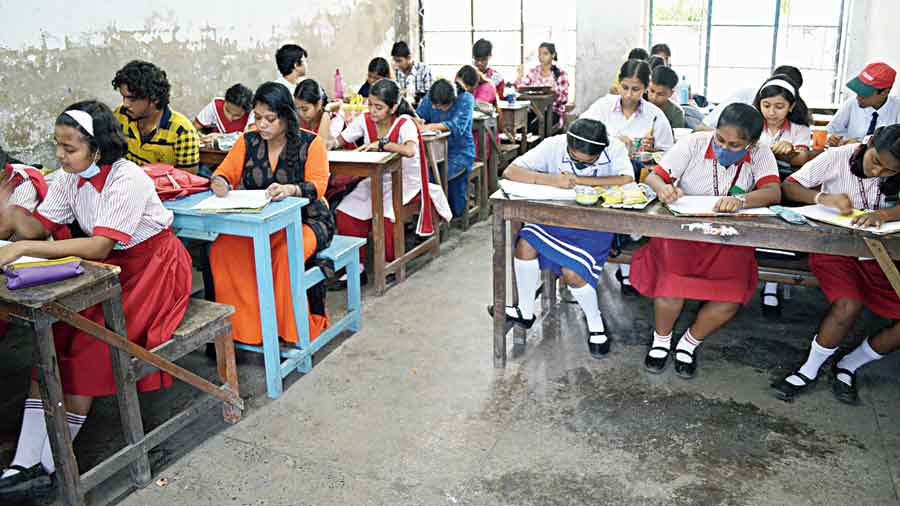Almost 1,500 students from across schools took part in a science festival at Acharya Prafulla Chandra High School for Boys in BK Block. Organised by Paschim Banga Vigyan Mancha, the event centred around environmental awareness.
The festival comprised 15 contests and was open to students of all classes. The top three winners of the events would be eligible to compete at the district level of the contests later.
There were events like essay writing, poster making, painting, report writing, quiz and so on. The newspaper report-writing had fifth to eighth graders writing on recent scientific developments around the world. Anushka Banik of Hariyana Vidya Mandir secured second place in this. “I am overwhelmed to have won a prize as I had little time to prepare. I hope to do even better at the next level,” said the Class VIII student.
High school students had a similar newspaper report to write but this one was on the environment. A quiz followed on the same theme. “We decided on a verbal and interactive quiz as a written one becomes more like an exam and students hate that,” said quiz co-ordinator, Anup Sen. “This way they got to interact while learning.”
The poster-making event had students painting as well as churning out slogans on environmental threats. The winner, Rupam Dutta of Class XII, had chosen water conservation as his topic. “I painted fish and plants in an aquarium with water spilling from the sides. My slogan was ‘save water save lives',” said the student from Chittaranjan Colony Hindu Vidyapith.
The event was organised by the Narendra Dabholkar Vigyan Chakra and Higgs Boson Vigyan Chakra under the Vigyan Mancha. Nitai Mukhopadhyay, chairperson of the Higgs Boson branch, said the event was meant to create awareness about the condition of our planet. “The next generation is our hope and we depend on their actions to protect the earth from global warming, ozone layer depletion, pollution etc,” he said.
Ayan Chatterjee, the event co-ordinating head, said they made huge efforts going school to school distributing forms and pamphlets and convincing their authorities to send as many students as possible. “Ultimately we ended up with 1,500 participants when we were expecting 200-300,” he smiled.
